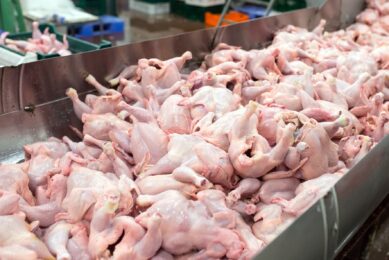China’s poultry gives Brazilian soybean a push

The Chinese appetite for pork, poultry and beef, which require higher volumes of soybean as animal feed, is proving the Brazilian soybean industry with a growing market.
“It takes a thousand tons of water to produce one ton of grain,” said Lester Brown, president of Earth Policy Institute, an environmental research and advocacy group. In northern China, where soybeans traditionally have been grown, water tables are dropping at a rate of one to three meters (3 to 10 feet) a year. Diminishing water supplies are hampering the ability of China to feed itself, and the increasing US use of farmland to produce biofuels, like ethanol, is pushing China to seek more of its agricultural staples from South America, where land is still inexpensive and plentiful.
In some parts of Brazil, the challenge of supplying China is already showing signs of strain. The soybean boom in the past two years has not brought rewards for many farmers in which produces more than a third of the country’s beans.
Beans don’t mean bucks
“Just because we’re producing a lot of beans here doesn’t mean we’re making money,” said Rogério Salles, a soybean farmer in Mato Grosso state (western Brazil). A higher-valued Brazilian currency and a bottlenecked transport system are working against many Mato Grosso farmers like Salles. Most soybeans are trucked south more than 1,600 km along two-lane highways full of potholes. At the export ports, some ships wait at sea for up to a month before finding docking space to load the beans.
China pledged US$10 billion in investments, mostly in infrastructure, but China has struggled with the Brazilian paper work and is waiting for Brazilian rules on public-private investments before committing large amounts of capital to infrastructure projects.
As for China, its dream is to connect directly with Brazilian farmers, bypassing the multinational grain merchants. Brazilian farmers say they would welcome Chinese money, but worry about having China as its primary soybean buyer, recalling an incident in 2004, when China rejected several shipments of Brazilian soybeans, saying they were contaminated.
To try to counter the Chinese influence, Brazilian producers are working with US growers to diversify their buyers. American soybean producers organized a joint trade mission with Mato Grosso farmers last December to India, another huge potential market.
Related articles:
Join 31,000+ subscribers
Subscribe to our newsletter to stay updated about all the need-to-know content in the poultry sector, three times a week. Beheer
Beheer











 WP Admin
WP Admin  Bewerk bericht
Bewerk bericht